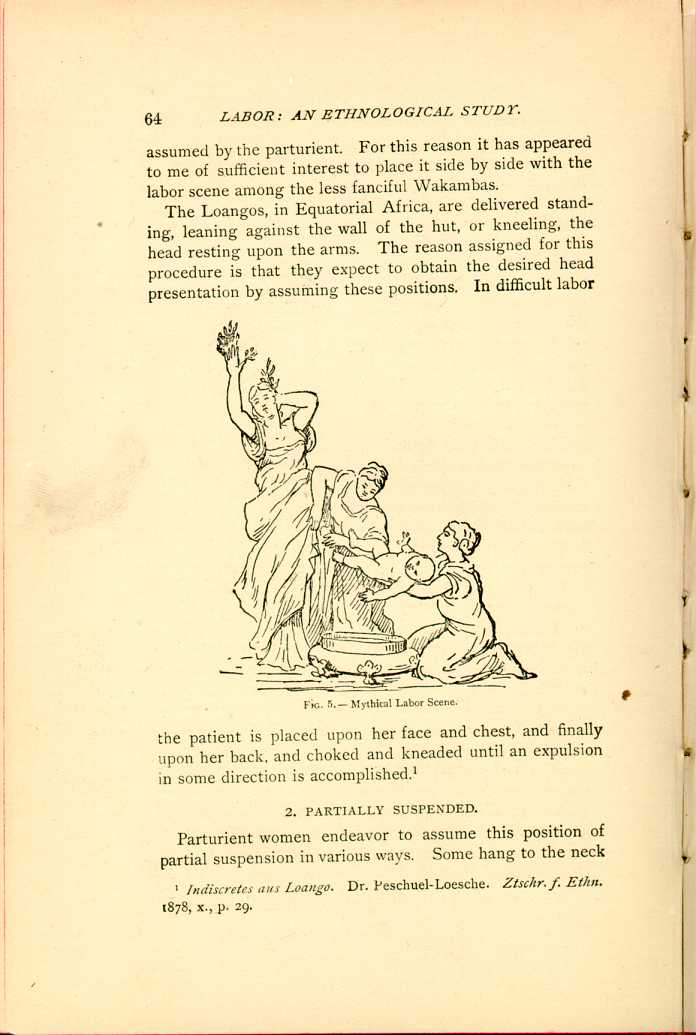| CHAPTER II.
POSTURE IN LABOR. Labor Among Primitive Peoples | ||
1. STANDING.
We shall find this apparently uncomfortable position assumed even at the present day, and in our own country: Thus, Dr. H. F. Campbell, of Georgia, writes me that he has delivered a patient standing, clinging to the bed-post, who would rather dispense with his services than assume any other position. Among our Indians it is rarely observed, although I have been informed by a correspondent that the Sioux women are delivered standing erect; I think
The Hindoos, especially upon the eastern coast of India and in the vicinity of Madras, are delivered in an erect, standing posture, supported by an assistant under each shoulder—the midwife attending to her duties, being seated in front of the patient,[9] and whether rare or not at the present day the position is certainly traditionary, as bas-reliefs still exist upon the ancient Indian monuments which represent the act of delivery in this very same way.
In Central Africa, and near the Cape, among the Boers, the standing posture is not uncommon. Among the Negritos, upon the Philippine Islands, the parturient woman assumes the standing position, but apparently bent forward a little, as she supports the abdomen against a bamboo cane planted in the ground, thus apparently exercising some pressure upon the uterus.[10] Among the Wakambas, in Africa,
A similar position is shown in an old painting in the
Academy of Medicine in New York. (See Fig. 5.) The

FIG. 4.—Labor Scene among the Wakambas.
(Western portion of Central Africa.)
[Description: Woman giving birth while standing upright, supported by two
friends. Another woman kneels before her to receive the child. Black
and white illustration.]
The Loangos, in Equatorial Africa, are delivered standing,
leaning against the wall of the hut, or kneeling, the
head resting upon the arms. The reason assigned for this
procedure is that they expect to obtain the desired head
presentation by assuming these positions. In difficult labor

FIG. 5.—Mythical Labor Scene.
[Description: Two women assist in delivering baby from a robed woman. Black
and white illustration.]
| CHAPTER II.
POSTURE IN LABOR. Labor Among Primitive Peoples | ||